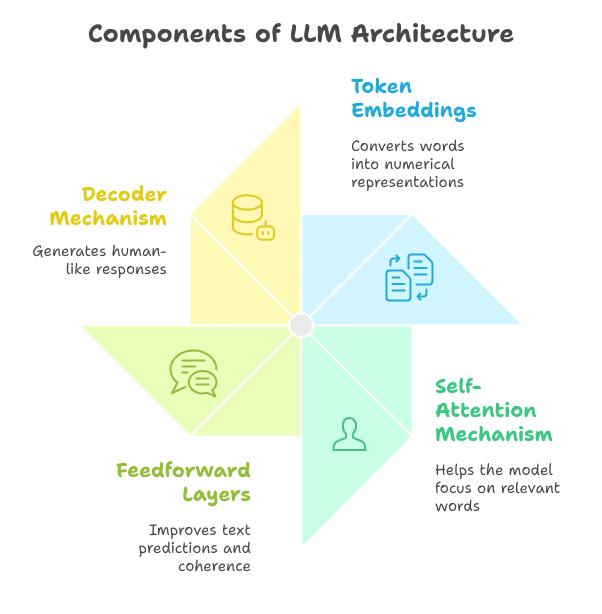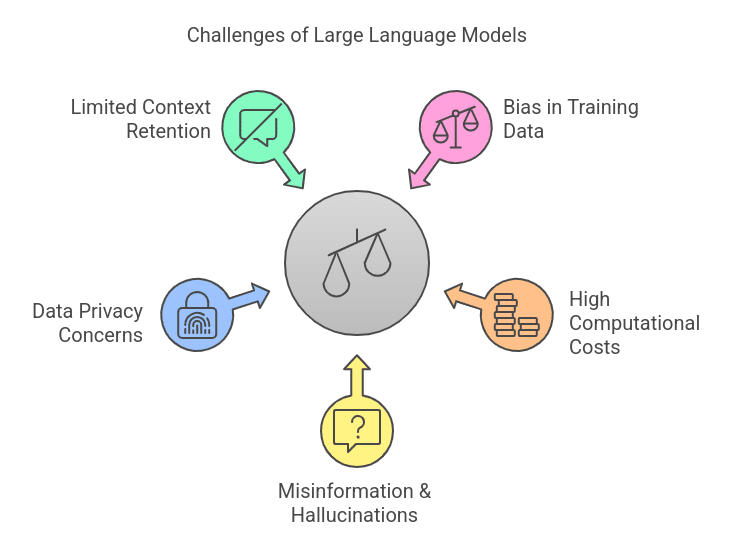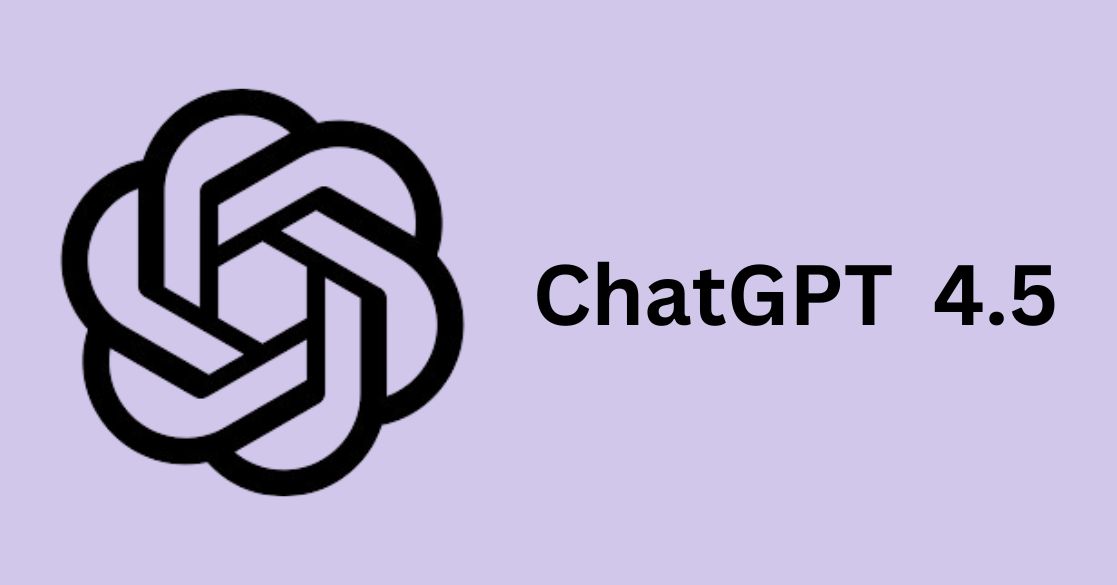Artificial Intelligence (AI) has transformed the way we interact with technology, and at the core of this transformation are Large Language Models (LLMs). These AI-powered models can process, understand, and generate human-like text, making them an essential part of chatbots, search engines, content creation tools, and virtual assistants.
In this article, we will explore everything you need to know about LLMs, from their architecture and applications to the challenges they face and their future in artificial intelligence.
What is LLM?
The Large Language Model (LLM) represents an artificial intelligence model that produces responses and comprehends text similarities to human language performance. The vast database containing books, articles, and websites feeds the LLM training process, which enables it to recognize language patterns and develop text-based responses.
LLM’s prediction and text generation capabilities rely on deep learning methods, enabling these models to adapt through context processing while handling diverse linguistic operations.
Examples of LLMs
Some of the most widely used Large Language Models include:
- ChatGPT– A conversational AI model by OpenAI.
- Gemini – A powerful LLM designed for multimodal interactions.
- Perplexity AI – A chatbot designed to provide real-time, factual responses.
These models use sophisticated AI algorithms to interpret prompts, answer queries, and generate human-like text.
Discover the best open-source LLMs and explore their features, use cases, and applications in AI development.
How Do Large Language Models Work?
The operation of large language models functions in these steps. Basic LLM operation depends on deep learning and specifically employs Transformer-based neural networks.
The self-attention system in these models evaluates word relationships as they generate responses that maintain contextual accuracy.

Steps in LLM Processing:
- Tokenization – The input text is broken down into smaller pieces (tokens) for processing.
- Training on Large Datasets – LLMs learn from massive text datasets, improving their language understanding.
- Attention Mechanisms – The model determines the importance of each word relative to others in a sentence.
- Text Generation – Using probability-based predictions, LLMs generate coherent and contextually relevant text.
The Transformer architecture, introduced by Google in 2017, significantly improved the efficiency and accuracy of these models, making them the foundation for modern AI-powered language processing.
LLM Architecture
The processing and text generation of LLMs depend on a complex multiple-layer architectural design composed of different functioning components.

Key Components of LLM Architecture:
✔ Token Embeddings – Converts words into numerical representations for the AI model to process.
✔ Self-Attention Mechanism – Helps the model focus on the most relevant words in a sentence.
✔ Feedforward Layers – Improves text predictions and sentence coherence.
✔ Decoder Mechanism – Generates human-like responses based on context.
This architecture enables LLMs to generate high-quality text, answer complex queries, and even create creative content like poems, essays, and code.
Applications of Large Language Models
Various industries benefit from the numerous enterprise applications of LLMs. Large Language Models are influencing various crucial areas as we inspect below.
1. Chatbots & Virtual Assistants
- AI-powered chatbots like ChatGPT and Google Gemini provide human-like interactions and assist with customer service, troubleshooting, and general inquiries.
2. Content Generation
- LLMs operate as programmed software to create blog content, reports and summaries along with social media posts thus enabling writers and businesses to work more efficiently.
3. Code Generation & Debugging
- Tools like GitHub Copilot assist programmers by generating code snippets, debugging errors, and improving productivity.
4. Language Translation & Processing
- Multiple language models operate in Google Translate and DeepL as well as AI-based transcription services thus improving global interaction.
5. Healthcare & Research
- AI-driven models assist in medical diagnosis, drug discovery, and research documentation, helping doctors and scientists analyze vast amounts of data.
6. Education & E-Learning
- AI tutors and personalized learning assistants provide explanations, generate study materials, and assist students with complex topics.
7. Creative Writing & Art
- LLMs help authors, poets, and artists generate ideas, write stories, and even create AI-assisted poetry and artwork.
LLMs are versatile tools that continue to evolve and expand into new fields.
Challenges of LLMs
Despite their advantages, Large Language Models face several challenges:

- Bias in Training Data – Since LLMs learn from existing content, they may inherit biases from their training data.
- High Computational Costs – Training and running LLMs require vast computing resources, making them expensive to maintain.
- Misinformation & Hallucinations – LLMs sometimes generate incorrect or misleading information.
- Data Privacy Concerns – Handling sensitive user data raises ethical and legal issues.
- Limited Context Retention – Some LLMs struggle with maintaining long-term coherence in conversations.
Experts devoted to improving these models work daily to enhance their accuracy as well as minimize bias while strengthening their security measures.
Learn the best practices for LLM management and deployment to optimize performance and scalability in AI applications.
The Future of LLMs in Artificial Intelligence
Artificial intelligence will advance through time which will enable LLMs to develop progressively sophisticated functions. Some key future trends include:
- More Efficient Training Methods – AI researchers are working on ways to reduce the energy consumption and cost of training LLMs.
- Better Personalization – Future models will tailor responses to individual users, improving user experience.
- Hybrid AI Models – Combining LLMs with other AI technologies for enhanced problem-solving.
- Multimodal AI – Multimodal AI functions to unify text with images along with audio processing capabilities to deliver a comprehensive artificial intelligence encounter.
These advancements will make LLMs smarter, faster, and more ethical, transforming industries and daily interactions.
Conclusion
Large Language Models (LLMs) are revolutionizing artificial intelligence, shaping the way we interact with technology. While they come with challenges, ongoing improvements in AI ethics, efficiency, and personalization will make them even more powerful in the future.
Want to learn more about AI and Machine Learning?
Advance your career with the UT Austin AI & Machine Learning course. Gain in-depth knowledge of AI, Machine Learning, Neural Networks, and Deep Learning while earning dual certificates from world-class faculty and industry experts.
Frequently Asked Questions
1. Can LLMs replace human writers?
No. While LLMs assist with writing, human creativity, critical thinking, and emotional intelligence are irreplaceable.
2. Do LLMs understand language like humans?
Not exactly. LLMs predict words based on statistical patterns but do not truly comprehend meaning as humans do.
3. How are LLMs fine-tuned for specific industries?
LLMs can be fine-tuned with domain-specific data for industries like healthcare, law, and finance.
Also Read: What is Fine-Tuning?
4. Can LLMs be used for multilingual processing?
Yes! Many LLMs are trained in multiple languages, but their accuracy depends on the data available for each language.
5. What are some ethical concerns related to LLMs?
Bias, misinformation, and job displacement are key concerns, prompting researchers to develop more responsible AI systems.









